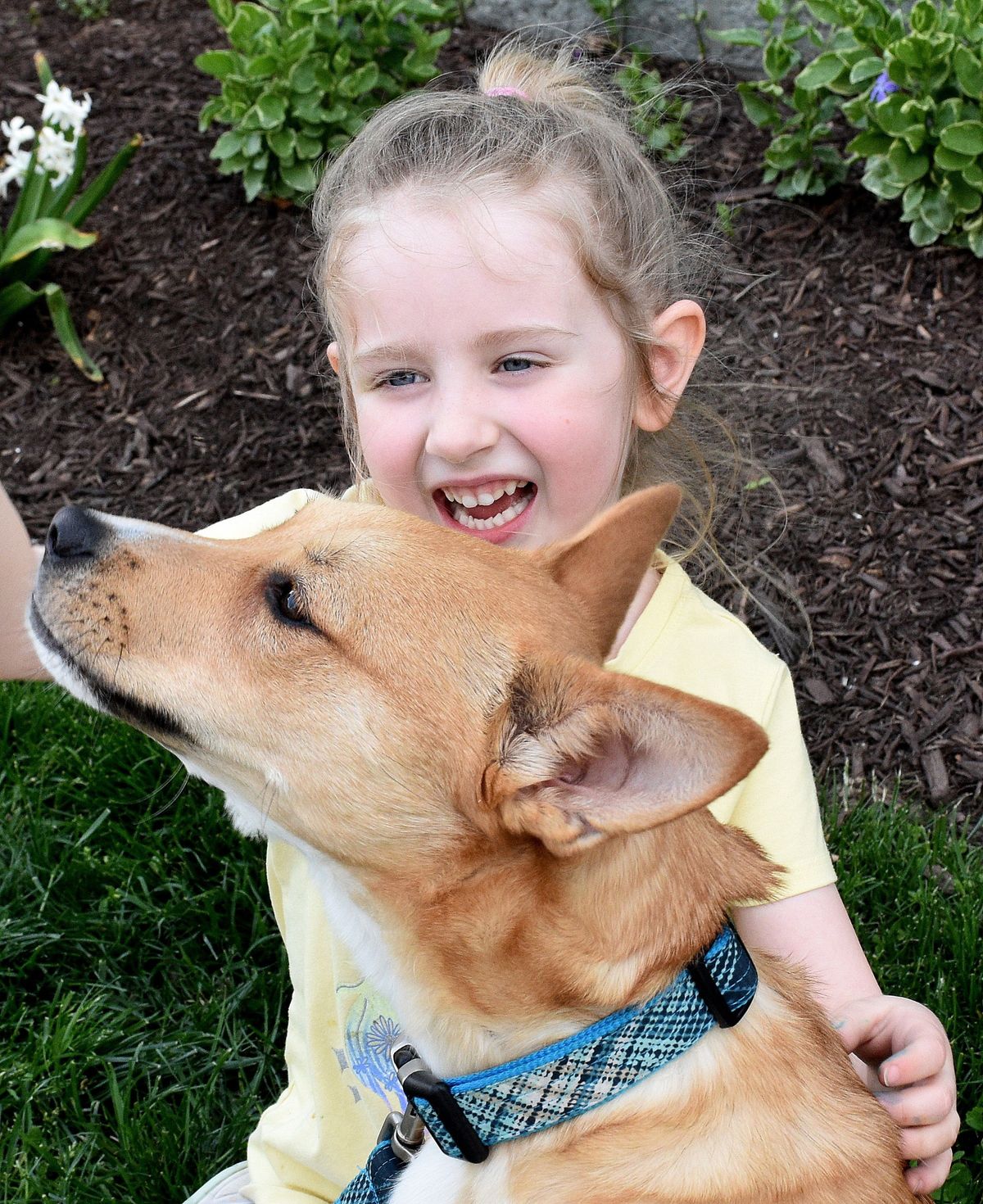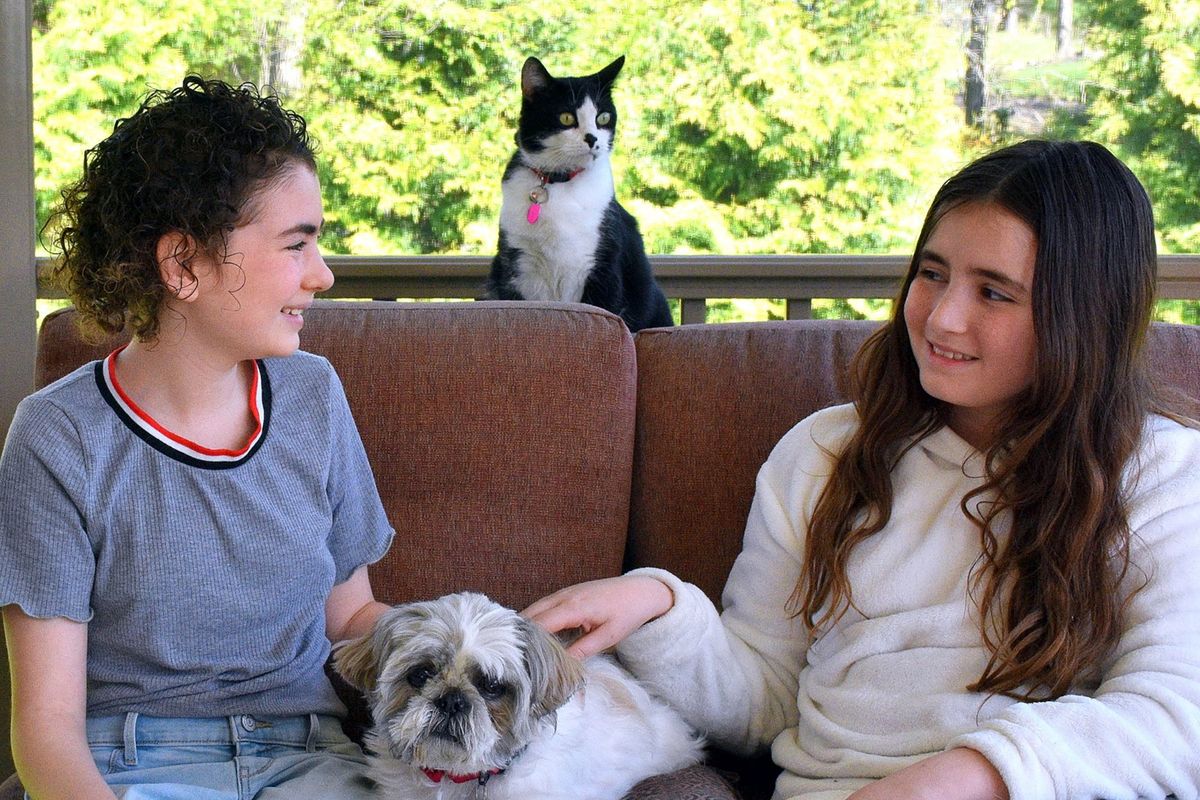Adopting a dog or cat is just one way to help animal shelters
Puppies are cute, but you need to consider their future size before adopting. When Brynne Toussaint first fostered Ducky, “He looked like a potato,” she said. A year later, he was a bigger bundle of energy. (Ann Cameron Siegal/For the Washington Post)
Each year, more than 6 million dogs and cats end up in animal shelters, according to the American Society for the Prevention of Cruelty to Animals. National Adopt a Shelter Pet Day, which was Saturday, was designed to raise awareness about organizations’ work with homeless animals. Their main mission is to find homes for pets and reunite lost ones with their human families, but they need a lot of volunteer help.
“Not everyone has to have an animal in order to care about animals,” said Debra Duel of the Humane Rescue Alliance in Washington. One way to help is to become a short-term foster family. Fostering frees up space in busy shelters. Adoptable pets get more personal attention fostered in a loving home than in bustling shelter environments.
“Fostering is great for people who can’t have a permanent pet,” Duel said. Fostering also helps people learn more about pet care before offering a forever home. In 2018, the Delacourt family of Dunn Loring, Va., began fostering kittens and pregnant cats through the Animal Welfare League of Arlington. Victoria, now 12, and Gabrielle, 10, have taken care of 49 animals since then.
“Every animal is an individual,” Victoria said. “Each requires different work. Puppies or kittens require more time and training than older dogs and cats,” she said. “Even small animals like guinea pigs are more work than people think.”
The family recently adopted two of their fostered animals: a mother cat after her six kittens were placed in homes and a 2-year-old small dog. “The older pets fit our family best,” Victoria said.
If your family is considering adopting a pet, be prepared for an interview. “We ask a lot of questions,” said Gina Hardter of the Animal Welfare League of Alexandria. Are you looking for an exercise buddy or a cuddly lap pet? Who is responsible for feeding, exercising and cleaning up after the pet? What’s your family’s lifestyle, and how much space do you have?
Sharing observations and other information about an animal’s personality, its history with children or other pets and medical or behavioral issues, makes successful placements more likely. Puppies are adorable, but consider their future adult size.
Brynne Toussaint, 6, and her family in Springfield, Va., fell in love with a mixed-breed, 4-day-old puppy while fostering his family of four. He was so tiny, Brynne said, “He looked like a potato.” Now, one year later, “Ducky” is a bouncing bundle of energy, who, when standing on his hind legs, is taller than Brynne.
If you can’t adopt or foster, consider donating time, money and supplies to a shelter. Kindergartners at Browne Academy in Fairfax County did just that. After learning about pet needs, behavior and care in a partnership with the Animal Welfare League of Alexandria, they raised several hundred dollars for the organization by drawing portraits of family pets that sold for $1 each.
They also made cat toys and pillows. Their efforts helped improve the animals’ stay at the shelter, and they helped reduce adoption fees for people who can’t afford them. Hopefully, that leads to fewer animals waiting for their forever homes.
If you’re ready to adopt
Before:
• Seek suggestions on good animal shelters from friends and neighbors.
• Learn about the enclosures, food, bedding and medical care your potential pet requires.
• Learn about plants and foods that might be toxic to a particular pet.
• Safety-proof your home. Explore the surroundings from an animal’s eye level, looking for hazards.
• Consider an animal’s life span. Cats and dogs can live 15 years or longer.
• Find out whether family members have allergies to animal hair.
• Are there restrictions on breed or weight of pets where you live?
• Select a veterinarian.
• Consider who will take care of your pet if you are traveling.
After:
• Have your dog or cat microchipped so they can be returned to you if they become lost.
• Be patient. It takes time for any pet to adjust to a new home and people.
• Limit excitement around your new pet for a few days.
• Let the pet come to you. He or she will let you know if they want to be held.

